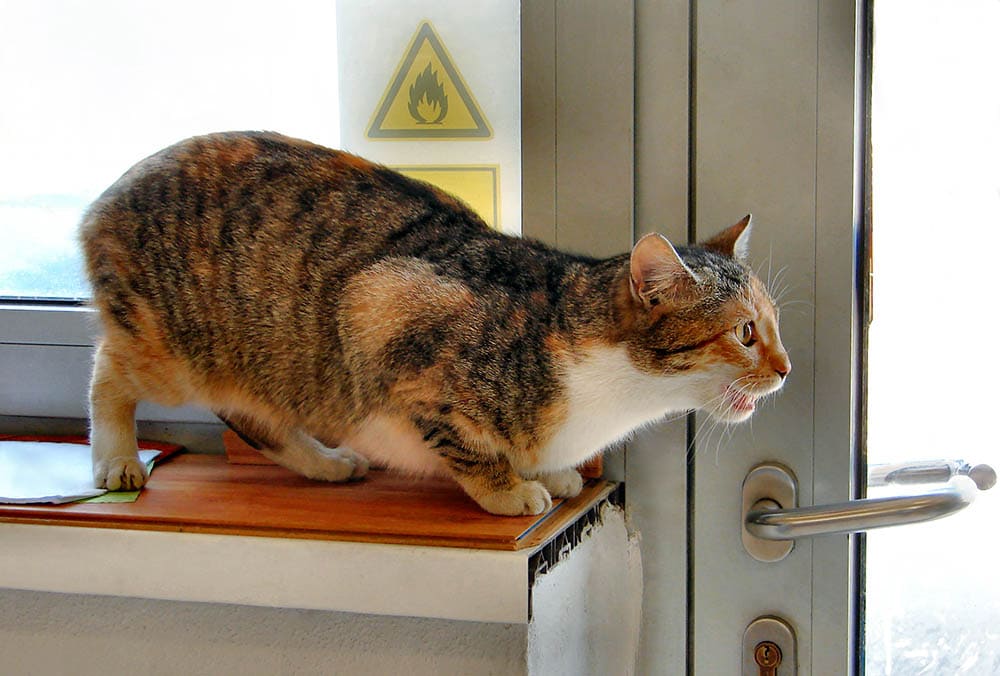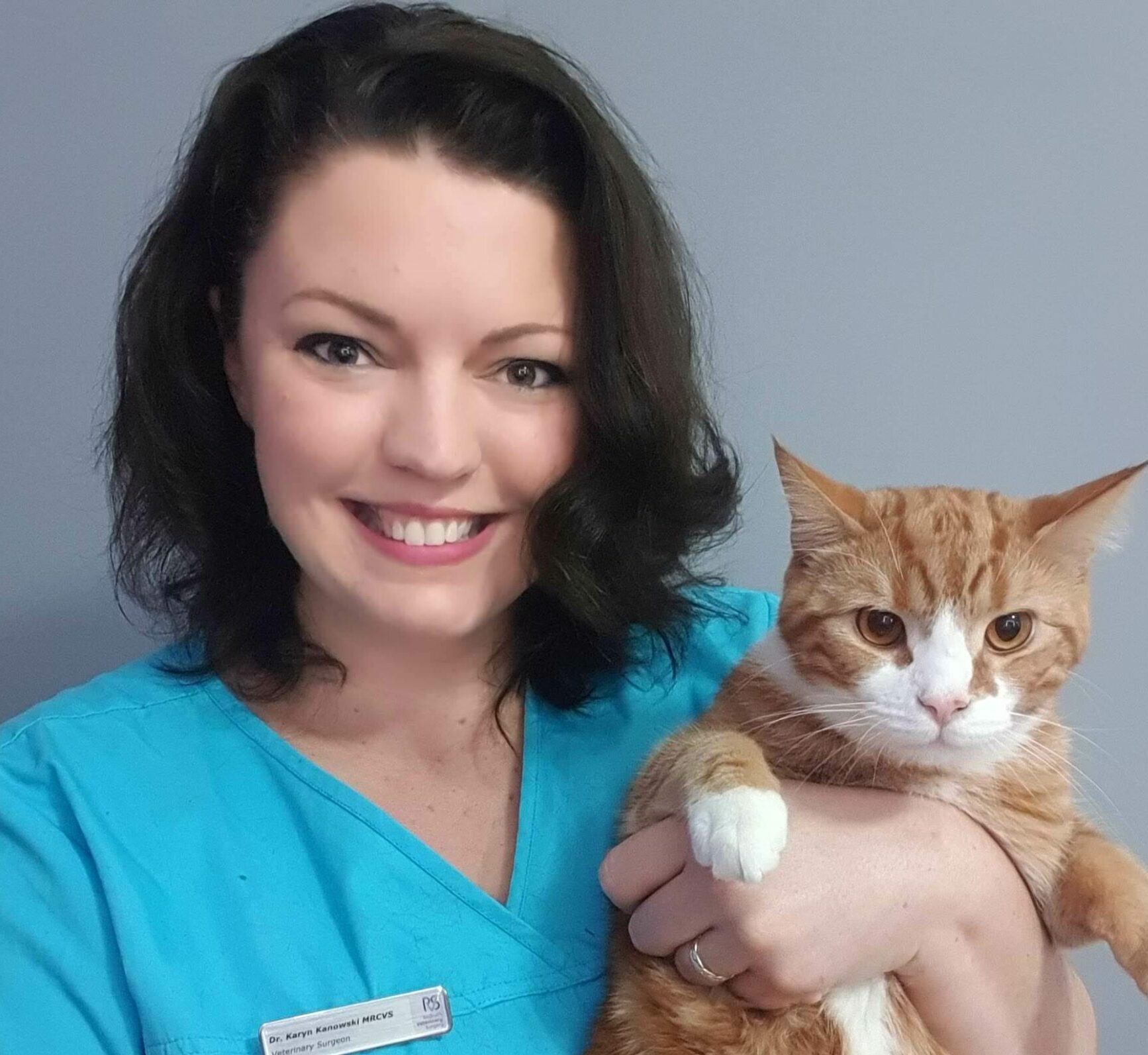When Do Cats Go Into Heat After Giving Birth? Our Vet Explains

Updated on

Click to Skip Ahead
A cat can go into heat and become pregnant again about 8 weeks after giving birth. This interval generally coincides with the period that the kittens are weaned and ready to fend for themselves.
However, there are situations when your cat can become pregnant again almost immediately after giving birth (within 2 weeks) or not until a few months afterward. Everything depends on the individual cat, including how fertile and healthy she is, as well as the male that she mates with.
Given the fact that pregnancy in cats lasts around 2 months, cats can technically have up to five litters per year, but this is not that common.
What Is the Estrous Cycle (Heat) in Cats?

Cats go through physiological cycles that prepare their bodies for fertilization, called “estrus” or heat. This is when the female cat is ready to mate. In cats, unlike other species, ovulation is induced, which means the act of mating causes the release of the egg.
In general, cats’ heat cycle (sexual cycle) is divided into the following five phases:
- Proestrus: This is the beginning of the sexual cycle.
- Estrus (heat): This typically lasts 3 to 10 days, but this period differs for each individual.
- Interestrus: This occurs only in cats that haven’t ovulated and lasts a few days up to 3 weeks.
- Diestrus (luteal phase): This occurs in cats that have bred.
- Anestrus: This is the period of sexual and hormonal inactivity.

In Which Stage of the Estrous Cycle Can Cats Get Pregnant?
In cats, the act of mating stimulates the release of eggs from the ovaries, which is called induced ovulation. This means cats can become pregnant at any time when they are in heat (in the estrus phase) and mating. However, for most females, it takes multiple matings (usually three to four) within 24 hours to release the egg (i.e., for ovulation to take place).1
If your cat has recently given birth, she can go into heat again and become pregnant in 1–21 weeks. However, the average period is 8 weeks.
How Long Does It Take for Cats to Mate?
Mating for cats lasts 1–2 minutes on average, and cats can mate several times in a short period and with multiple males. As a result, newborn kittens can have several different fathers.
Once ovulation has occurred, cats will come out of heat in 1–2 days. If the cat in heat has not reproduced, the hormone level will decrease, and she will go back to normal. The heat cycle will repeat after 2–3 weeks.
Signs that a cat is in heat are typically behavioral in nature and include:
- Strong vocalization
- Being especially affectionate and clingy
- Rolling on the floor
- Raising the hindquarters
- Decreased appetite
The heat cycle in cats should not be confused with human menstruation. Cats do not bleed, though in some rare cases, it can happen and requires veterinary attention, as it may point to other health issues, such as urinary tract disorder or an infection.

When Do Cats Go Into Heat?
Cats have their first reproductive cycle when they reach puberty (sexual maturity), which happens between their 4th and 12th months of life, depending on the breed and size. On average, cats become sexually mature at the age of approximately 6 months, but this can be as early as 4 months. From this point on, cats are considered sexually mature and able to reproduce. The exact onset depends on three important factors:
- Weight
- Breed
- The length of the day
To be able to reproduce successfully, a cat must have reached 80% of their final adult weight. In addition, large breeds come into heat later than small breeds. For example, Maine Coons may reach sexual maturity around the age of 8 to 12 months old, but this is still too early for them to mate and have a litter. Persian cats may reach their first estrus at 18 months or even later. In general, long-haired cats tend to have a later puberty than short-haired cats.2
How Often Do Cats Go Into Heat?
The length of the heat cycle, when it occurs, and the number of cycles during a year depends on the daylight and the climatic influences of the respective period, as well as the individual cat. For cats that live outside and have access to natural light and various climatic conditions, such as in the Northern Hemisphere, the estrous cycle can theoretically occur up to 12 times a year, between January and fall, if mating has not led to pregnancy. However, it’s often much less than this. These cycles are interrupted by a period of sexual inactivity that begins in late autumn and ends at the end of winter and the beginning of spring.
Cats in tropical climates with more than 12 hours of light per day may season throughout the whole year, similarly to cats that live only indoors and have a controlled environment, constant temperature, and light for a longer period.

Reasons for Neutering or Spaying Your Cat
Neutering and spaying have multiple health and behavioral advantages on not only individual cats but also the cat population as a whole. Females do not go into heat, and both females and males no longer mark their territory inside or around the house, or they do so much less. Neutering will reduce the likelihood of cats roaming in search of a mate and getting into fights with other cats, which may end up in transmission of various viral infectious diseases or getting lost or injured in road traffic accidents.
In general, spayed and neutered cats live longer than intact ones. Also, spaying and neutering prevent cats from reproducing, thus reducing numbers of unwanted kittens and abandoned animals and health issues related to the reproductive organs, such as pyometra or infection of the uterus in females.
Frequently Asked Questions (FAQ)
Can You Spay a Cat in Heat?
Yes, it is possible, but it is not recommended, as the surgery could be complicated due to the larger amount of blood in the reproductive organs. When a cat is in heat, her reproductive system is more vascularized and enlarged, which may cause more bleeding. If there is no other option, a cat in heat can be neutered. But if there is no urgency, wait 1–2 weeks before spaying your pet.

Are Heat Cycles Bad for Cats?
The heat cycle is a normal part of life for any cat. However, complications can occur, especially in cats that are constantly in heat. Stress and an increased risk of ovarian cysts, infections, and other uterine diseases can occur. In addition, cats can lose weight because they are eating less. For this reason, monitor your cat while they are in heat, and communicate any visible behavior changes to your vet right away.
Conclusion
The heat or estrus is when a female cat is ready to mate. The mating act stimulates ovulation. Estrus generally begins at a young age, at about 6 months, after which, the frequency of subsequent heat cycles can vary from individual to individual. Outdoor cats go into heat during early spring and summer, up to late fall. There is no set time when indoor cats go into heat; it can happen at any time. If your cat has become pregnant, her next heat cycle may appear around 8 weeks after giving birth, though it can be much sooner or later than this. So, it’s best to speak to your vet about spaying or neutering your cat.
Featured Image Credit: iwciagr, Shutterstock















